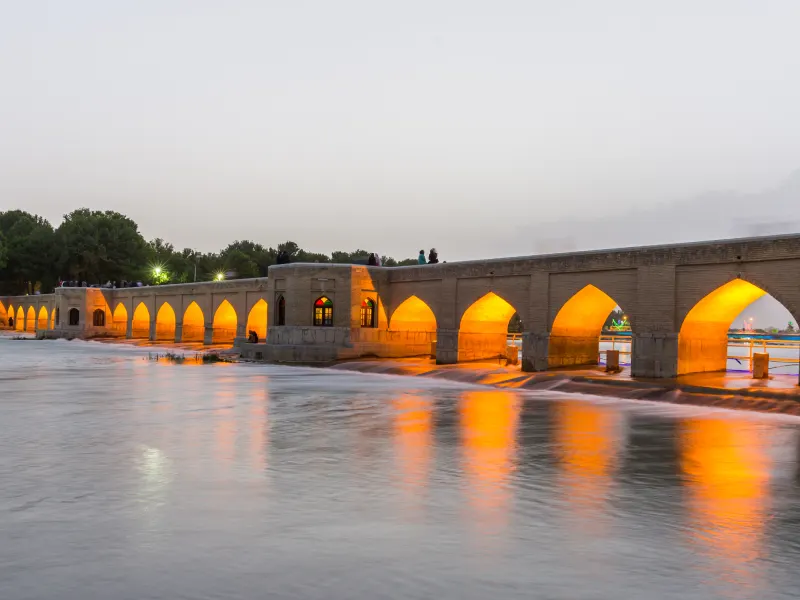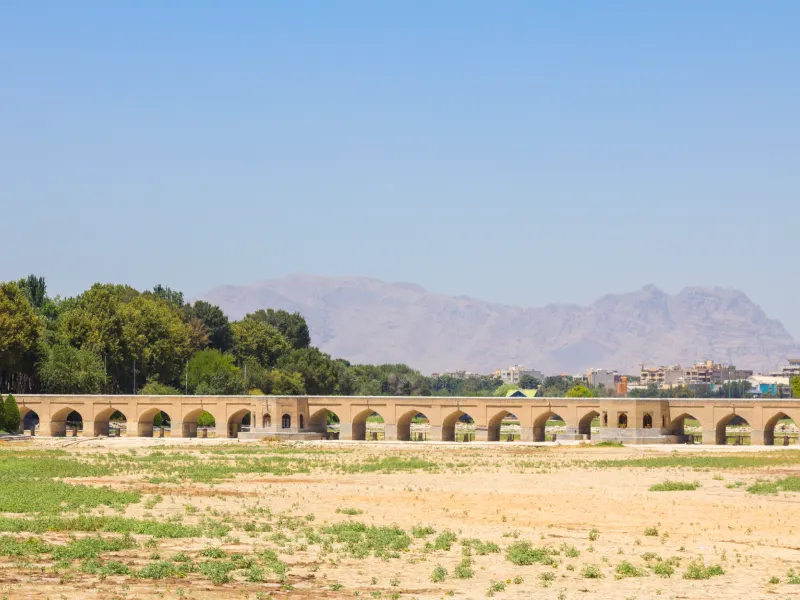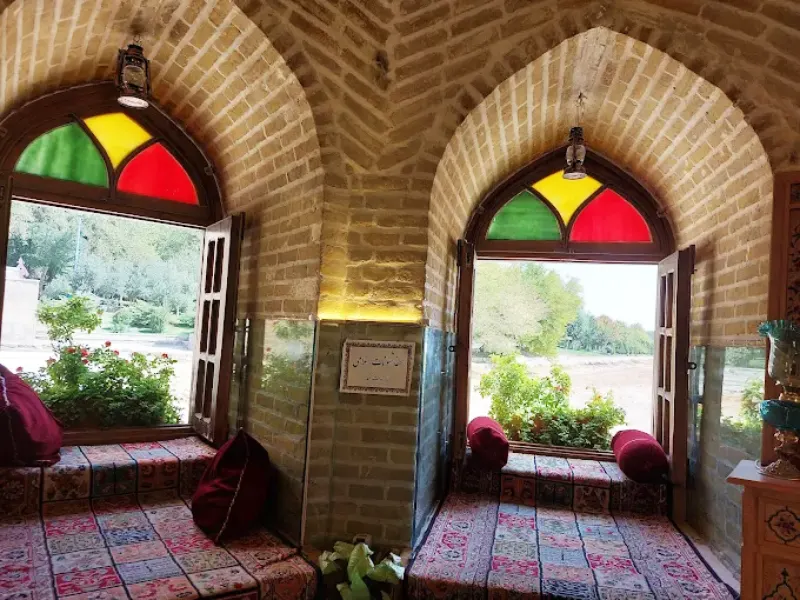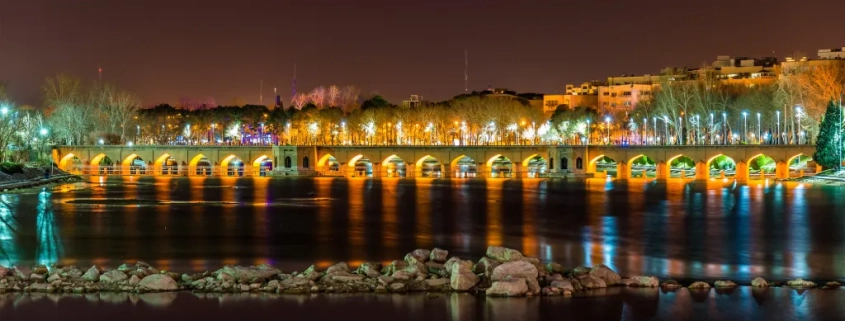Chubi Bridge, Isfahan (Photos, Reviews, Location)
Part of Isfahan’s beauty and fame comes from the old bridges built across the city. The main purpose of all these bridges was the same: to connect the two sides of the Zayanderud River and create a path for people to pass. However, none of the famous bridges were built exactly like each other. Si-o-se-pol and Khaju Bridge are the most important historic bridges of Isfahan, and they have significant differences from one another. Among them, there is a bridge that was built differently from all the others. In this article, we have introduced Chubi Bridge, which is also known as the private bridge of Shah Abbas, his courtiers, and his guests. It is truly a fascinating and beautiful bridge, but many tourists are not very familiar with it. Stay with us to discover more.
Chubi Bridge in Isfahan History
Many bridges have been built over the clear waters of the Zayanderud River. Each of these bridges once served as a passageway for local people. Chubi Bridge, unlike the other bridges in Isfahan, was used by the royal court and nobles.
In other words, the Chubi Bridge in the past connected the royal gardens located on the northern and southern sides of the river. It is the oldest bridge built over the Zayanderud. The construction of Chubi Bridge dates back to the reign of Shah Abbas II of the Safavid dynasty, around the year 1065 AH (Islamic calendar).

The bridge was built to connect the northern part of the Zayanderud to the southern part. Important places like Saadatabad Palace, the Ayineh Khaneh Mansion, and the Namakdan Mansion were located on one side, while other royal palaces were on the opposite side. With the construction of this bridge, the problem of access for the courtiers to these places was solved.
The Architecture of Chubi Bridge
The structure of the bridge includes several pointed arches and 21 large and small openings. The total length of this beautiful historical bridge is 147 meters. It was built with strong and durable materials such as mortar, sarooj (a traditional water-resistant material), and carved stone. Mortar, bricks, and plaster were also used in the main body and the arches of the bridge.
In the middle of the bridge, there was a six-sided tower that once served as a symbol of welcome for royal guests and nobles. Water flowing through different parts of the tower made the environment even fresher and more pleasant. Unfortunately, today, only a small part of this six-sided tower remains.
There are also a few small rooms under the bridge, which show that meetings of kings and royal dignitaries were held there in the past.
Other Names of Chubi Bridge
Chubi Bridge in Isfahan is known by several different names.
In his book, Jean Chardin mentions that the bridge was made of wood and stood on stone foundations. Therefore, calling it “Chubi Bridge,” meaning Wooden Bridge, is quite fitting.
A long and narrow water channel passes through the carved stone section in the middle of the bridge. For this reason, the bridge is also known as “Joui Bridge.”

Many people also call it “Lake Bridge” because water gathers on the western and eastern sides of the bridge.
In some Safavid-era books, the bridge is referred to as “Saadatabad Bridge,” named after the Saadatabad district where it is located.
Additionally, the bridge is sometimes called the “Haft Dast Bridge” because it is located near seven royal palaces from the Safavid period.
The Nights of Chubi Bridge
If you plan to visit Chubi Bridge in Isfahan, it is best to choose nighttime. As the sun sets and the sky becomes dark, the beautiful lighting of this historic structure makes the atmosphere bright and enchanting.
At night, you will see many people gathering on the bridge for romantic meetings or friendly conversations. The greenery around the bridge makes the scenery even more beautiful than before.
From time to time, you can hear the pleasant sound of traditional music coming from the small rooms under the bridge. As people walk across Chubi Bridge and listen to this soulful music, their mood often changes for the better.
There is also a café under the bridge, offering a cozy and peaceful place for spending the evening. If you wish, you can stop by the café to enjoy a cup of coffee or tea.
Chubi Bridge Location
Chubi Bridge is located near the Zayanderud River in the beautiful city of Isfahan. Access to the bridge is quite easy. You just need to reach one of the streets near the river, such as Kamal Esmaeil Street or Ayineh Khaneh Boulevard.

The bridge is about 1 kilometer away from Si-o-se-pol Bridge and about 750 meters from Khaju Bridge, making it very close to some of Isfahan’s most famous landmarks.
How to Get to Chubi Bridge
By Bus: You can use several nearby bus stations. The “Pol Bus Station” on Kamal Esmaeil Street, the “Khaju Bridge Bus Station” on Chaharbagh Khaju Street, and the bus stop on Sheikh Saduq Shomali Street are the closest options for reaching Chubi Bridge easily.
By Metro: If you prefer using the metro, there are two options, but both are a bit farther from the bridge. The first is the “Si-o-se-pol Metro Station,” located about 1 kilometer away. The second is the “Enghelab Metro Station,” which is about 2 kilometers from the bridge.
Chubi Bridge Reviews
Visitors to Chubi Bridge in Isfahan often describe it as a peaceful and charming spot, ideal for those seeking a quieter alternative to the city’s more crowded landmarks. Many people who have visited this historic bridge praise its cozy and peaceful atmosphere, making it a popular place for evening strolls and intimate gatherings.
The bridge’s unique architecture and historical significance add to its allure, offering a glimpse into the Safavid era. Some reviews highlight the presence of nearby cafes and occasional traditional music performances, enhancing the cultural experience.
While it may not boast the grandeur of Si-o-se-pol or Khaju Bridge, Chubi Bridge’s understated beauty and tranquil setting leave a lasting impression on those who visit.
Chubi Bridge Photos
Photographs of Chubi Bridge showcase its elegant brickwork and symmetrical arches, which create a harmonious visual rhythm. The bridge’s design is understated yet refined, reflecting its exclusive use by the royal court during the Safavid period.

In the evenings, beautiful lighting enhances its architectural features and casts a warm glow that doubles the bridge’s historical charm. Visitors always take photos of the peaceful environment of the bridge, with the gentle flow of the river and the surrounding greenery creating a beautiful backdrop, capturing the best memories of this beautiful city.
These photos not only depict the bridge’s structural beauty but also convey the tranquil ambiance that Chubi Bridge offers to those who visit.
Final Word
The Chubi Bridge is one of the oldest bridges in Isfahan, which is less well-known than other bridges in Isfahan, but it is definitely worth a visit. This historic bridge is a precious memory from the Safavid era. In the past, this charming historic bridge was used by the royal family to cross the river. In the middle of the structure, there was a six-sided tower where flowing water springs created a pleasant environment for the guests who were going to meet the king. Today, however, it has become a charming spot for both locals and tourists. The atmosphere of Chubi Bridge at night is very beautiful, so make sure to visit it when you travel to Isfahan.
Are you planning to travel to Iran and looking for an Iran resort? Consider Matinabad Eco-resort.





Leave a Reply
Want to join the discussion?Feel free to contribute!